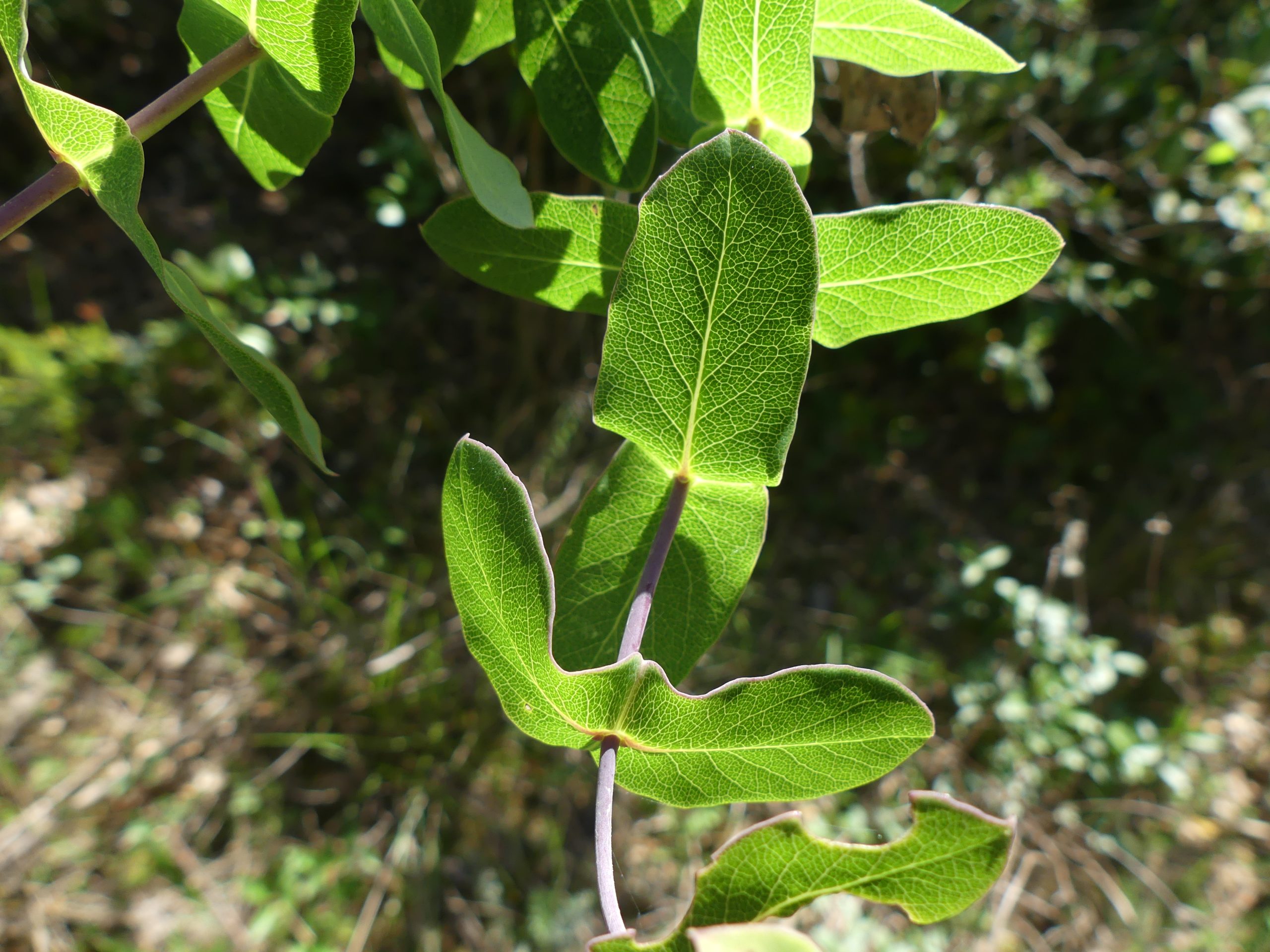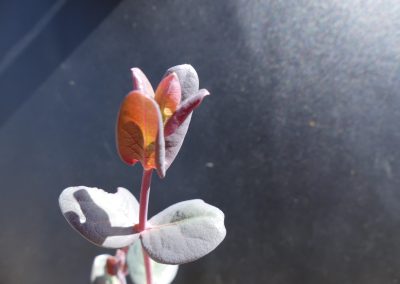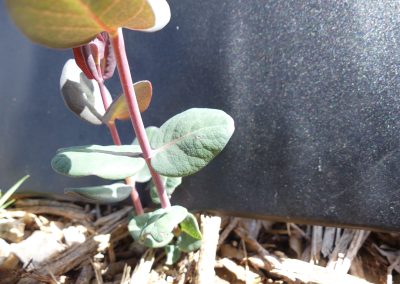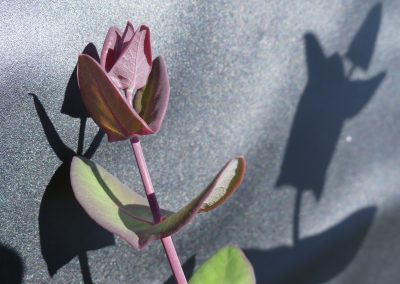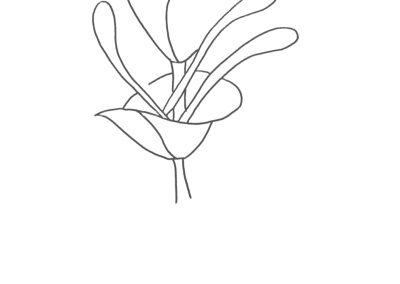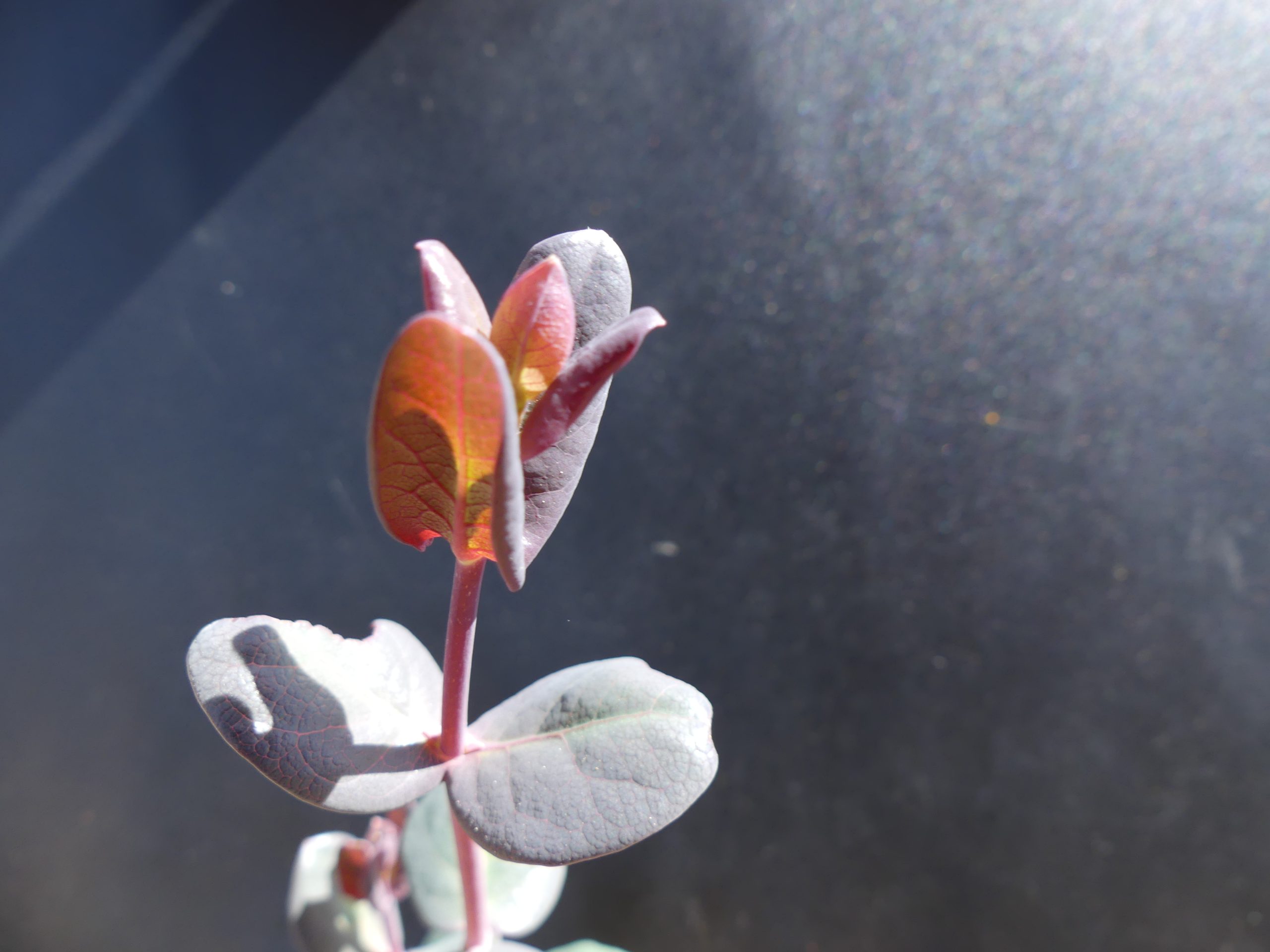Lonicera implexa
Scientific description
Taxon: Lonicera implexa
Class: Dicotyledons (Magnoliopsida)
Subclass: Asterids
Order: Dipsacales
Family: Caprifoliaceae
Common name: Climbing honeysuckle
Origin:
Mediterranean region, southern Europe.
Description:
Climbing vine or scrambling shrub 2–4 m long. Leaves oval to rounded, often opposite; upper leaves fused at the base. Flowers in terminal clusters, tubular, cream to pink-purple, highly fragrant, blooming spring and summer. Attracts pollinators, especially butterflies. Fruits small red berries, not edible. Common in Mediterranean maquis and hedgerows, twining around supports without tendrils.
Propagation:
Seeds (bird-dispersed) or semi-woody cuttings in summer.
Ecology:
Typical of garrigue, maquis, woodland margins, and hedges. Tolerant of drought and calcareous soils. Attracts birds and insect pollinators.
Uses:
Ornamental plant for dry gardens. Fragrant flowers appreciated. Historical medicinal use, rare today.
Threats:
Not threatened. Common species, well adapted to Mediterranean climate. Locally sensitive to overgrazing and uprooting.
Taxon: Lonicera implexa
Classe: Dicotylédones (Magnoliopsidées)
Sous-classe: Astéridées
Ordre: Dipsacales
Famille: Caprifoliacées
Nom commun: Chèvrefeuille grimpant
Origine:
Région méditerranéenne, sud de l’Europe.
Description:
Liane ou arbuste sarmenteux 2–4 m. Feuilles ovales à arrondies, souvent opposées, supérieures fusionnées. Fleurs en bouquets terminaux, tubulaires, crème à rose violacé, très parfumées, floraison printemps et été. Attire pollinisateurs, surtout papillons. Fruits baies rouges, non comestibles. Très commun dans maquis et haies méditerranéennes, s’enroule sur supports sans vrilles.
Propagation:
Graines (dispersion ornithochore) ou bouturage semi-ligneux en été.
Écologie:
Garrigue, maquis, lisières et haies. Tolère sécheresse et sols calcaires. Attire oiseaux et insectes pollinisateurs.
Utilisation:
Plante ornementale pour jardins secs. Fleurs parfumées appréciées. Usage médicinal ancien, rare aujourd’hui.
Menaces:
Non menacée. Espèce commune, bien adaptée au climat méditerranéen. Sensible localement au surpâturage et à l’arrachage.
Taxon: Lonicera implexa
Clasă: Dicotiledonate (Magnoliopsida)
Subclasă: Asteride
Ordin: Dipsacales
Familie: Caprifoliaceae
Denumire populară: Caprifoi urcător
Origine:
Regiunea mediteraneană, sudul Europei.
Descriere:
Viță cățărătoare sau tufa cățăritoare 2–4 m. Frunze ovale până rotunjite, deseori opuse; superioarele unite la bază. Florile în buchete terminale, tubulare, crem până la roz-violet, foarte parfumate, înflorire primăvara și vara. Atrag polenizatori, mai ales fluturi. Fructe bobițe roșii, necomestibile. Comun în maquis și garduri vii, se încolăcește pe suporturi fără vrejuri.
Propagare:
Semințe (dispersie ornitocoră) sau butași semi-lemnoși vara.
Ecologie:
Garrigue, maquis, marginile pădurilor și garduri vii. Tolerează seceta și solurile calcaroase. Atrage păsări și insecte polenizatoare.
Utilizare:
Plantă ornamentală pentru grădini uscate. Florile parfumate sunt apreciate. Folosire medicinală tradițională, rară astăzi.
Amenințări:
Nu este amenințată. Specie comună, bine adaptată la clima mediteraneană. Sensibilă local la supra-pășunat și smulgere.
Ταξινόμηση: Lonicera implexa
Κλάση: Δικοτυλήδονα (Magnoliopsida)
Υποκλάση: Αστερίδες
Τάξη: Dipsacales
Οικογένεια: Caprifoliaceae
Κοινή ονομασία: Αναρριχώμενος ζουμπούλι
Προέλευση:
Μεσογειακή περιοχή, νότια Ευρώπη.
Περιγραφή:
Αναρριχώμενος θάμνος 2–4 μ. Φύλλα ωοειδή έως στρογγυλά, συχνά αντίθετα, άνω φύλλα ενωμένα στη βάση. Άνθη σε τερματικούς σχηματισμούς, σωληνοειδή, εκρού έως ροζ-ιώδους, πολύ αρωματικά, ανθίζουν άνοιξη και καλοκαίρι. Προσελκύει επικονιαστικά έντομα, κυρίως πεταλούδες. Καρποί μικρά κόκκινα μούρα, μη βρώσιμα. Κοινό στη μεσογειακή μακκία και φράχτες, τυλίγεται γύρω από στηρίγματα χωρίς πηχυγά.
Πολλαπλασιασμός:
Σπόροι (ορνιθόχορρη) ή ημιξυλώδη μοσχεύματα το καλοκαίρι.
Οικολογία:
Garrigue, μακκία, παρυφές δασών και φράχτες. Ανθεκτικό σε ξηρασία και ασβεστολιθικά εδάφη. Προσελκύει πουλιά και επικονιαστικά έντομα.
Χρήση:
Καλλωπιστικό για ξηρούς κήπους. Αρωματικά άνθη εκτιμούνται. Παραδοσιακή φαρμακευτική χρήση σπάνια σήμερα.
Απειλές:
Δεν απειλείται. Κοινό είδος, καλά προσαρμοσμένο στη μεσογειακή κλιμα. Τοπικά ευαίσθητο σε υπερβόσκηση και εκρίζωση.
Creative writing inspired by Lonicera implexa
Balearic honeysuckle
Once upon a time, Rita was a prisoner in a castle. Her stepmother wouldn't let her out, because she was jealous of her beauty and feared that a royal boy would kidnap her. She only let her walk and play with the forest animals in the garden, with whom she conversed and who were her only friends. Every morning, she secretly watered a small tree she'd planted long ago, which was beginning to climb slowly up the castle walls. The plant was called Balearic honeysuckle.
One day, while Rita was playing with her ball, it left the garden and she was unable to fetch it, her mother-in-law having forbidden her to leave. Just as Rita thought she'd lost her ball, the only toy she had for playing with her animal friends, she saw a young man dressed as a knight approaching her with his ball. Not knowing how to react, as Rita was not used to social interaction, she took the ball, thanked the young man and started to walk away. The young man said, “Wait! What's your name?”. Rita tells him her name and he admits that he thinks she's very pretty. She blushes.
As soon as her stepmother sees the scene, she grabs her, closes all the castle doors and imprisons Rita in her room, no longer allowing her out into the garden. Rita cries incessantly and at the same time doesn't know what's happening to her, because she feels butterflies in her stomach when she thinks of the charming young man. She wants to see him again, but she can't. The young man comes looking for her every day, but no one answers. Until one evening, when she arrives at the castle, she spots the vine that leads to Rita's room and starts climbing it. Rita opens the window and is stunned by the sight before her. Fortunately, her mother-in-law is asleep.
Thanks to the Balearic honeysuckle, the two of them climb down together and leave the castle forever. And the plant becomes the symbol of their love.


